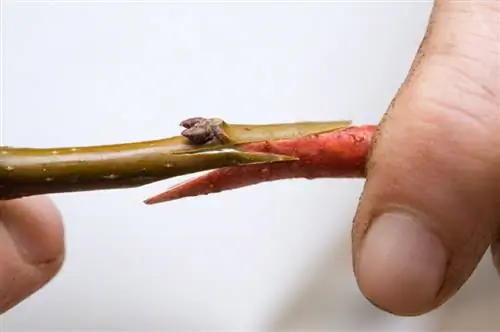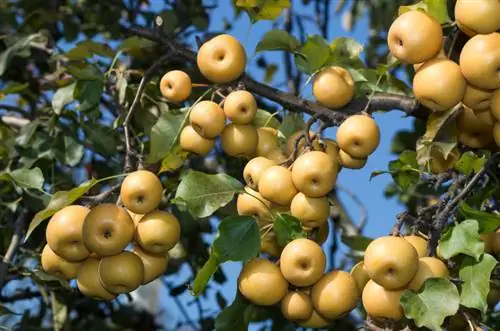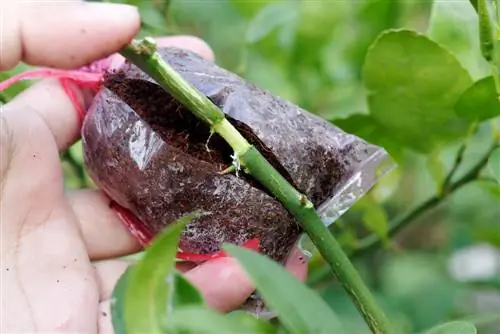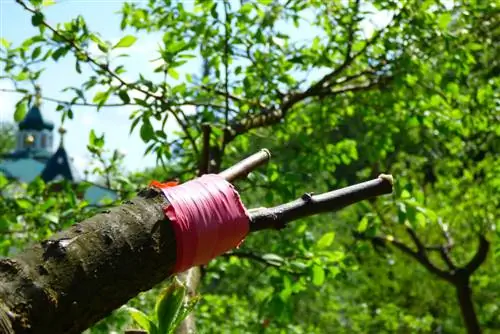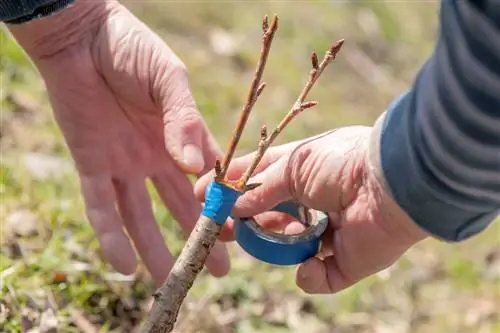- Author admin [email protected].
- Public 2023-12-16 16:46.
- Last modified 2025-01-23 11:20.
The cherry trees are propagated through grafting. One or more scions of the desired variety are grafted onto the appropriate rootstock. The success of the grafting depends on the professionally carried out grafting.
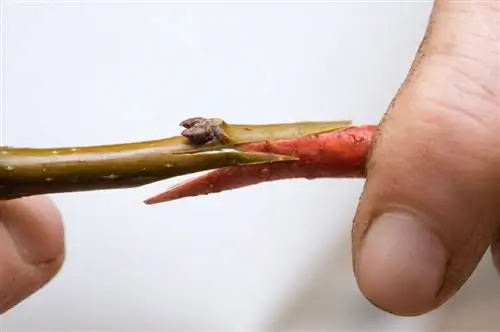
How do you graft a cherry tree?
To graft a cherry tree, you need a sharp knife, bark remover, raffia, tree wax and annual shoots of the desired variety. In spring, stick scions behind the bark or in a notch on the base, connect with raffia and spread with tree wax.
What do you need for grafting
On the one hand, you need a suitable tool and, on the other hand, the right finishing material. To cut scions and make the necessary cut into the bark of the base, you need a sharp knife with a bark remover (€15.00 on Amazon). In order for the grafting area to heal, you need raffia to connect it and tree wax to spread it on.
As a finishing material, annual shoots with leaf buds the thickness of a pencil and about 30-40 cm long are used. You cut these off at the base of the cherry tree whose variety you want to propagate. Cherry trees are suitable as rootstocks, as they slow down growth so that the future tree remains small and bears fruit sooner. The base is cut back to a tension branch next to the crown stump.
When to graft
The scions cut in winter (December/January) are stored in a box filled with moist sand in a cool, frost-free place. When the cherry trees begin to sprout in spring (end of April/beginning of May), it is time to move the scions to the appropriately prepared base.
How to graft
The scion is grafted onto the base using
- Bark plugs and
- Goat's foot plug
makes a difference.
When bark grafting, the scions are inserted behind the previously cut bark of the base. When grafting goat's foot, not only is an incision made in the bark, but also a notch in the wood behind it. In both cases, the scions are then inserted behind the bark or into the notch and firmly connected with raffia and spread with tree wax.
Tips & Tricks
If the base and the scion are the same thickness, it is possible to bring the two plant parts directly together and connect them with the diagonally cut ends. This type of refinement is called copulation.

